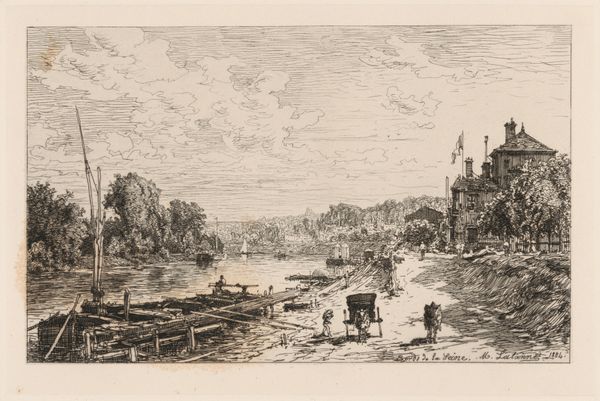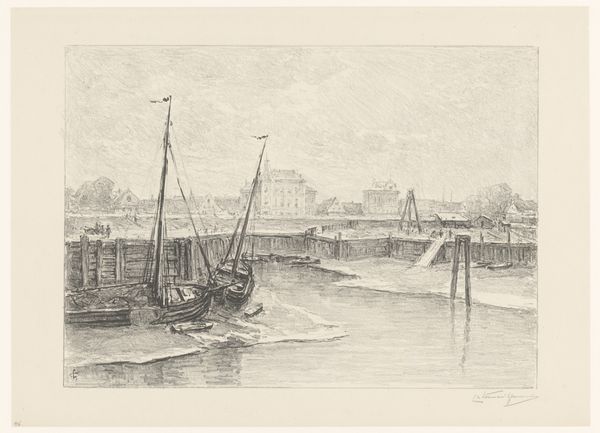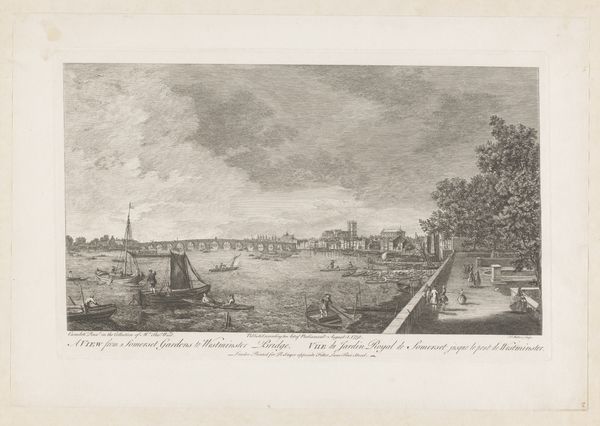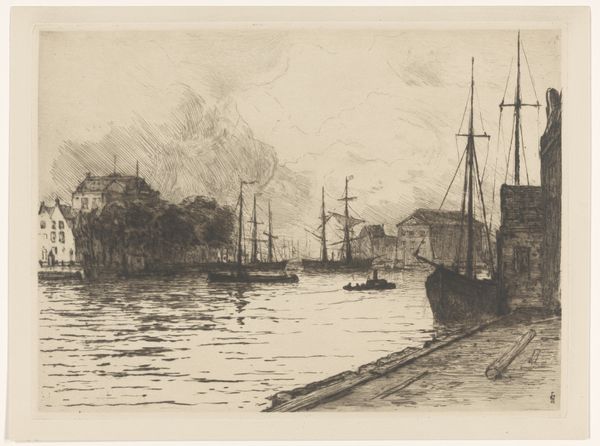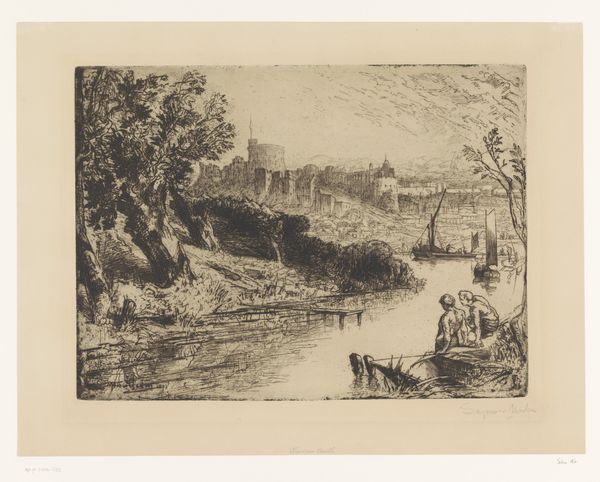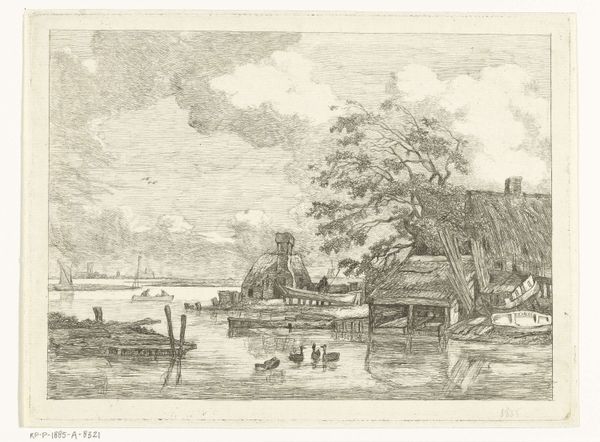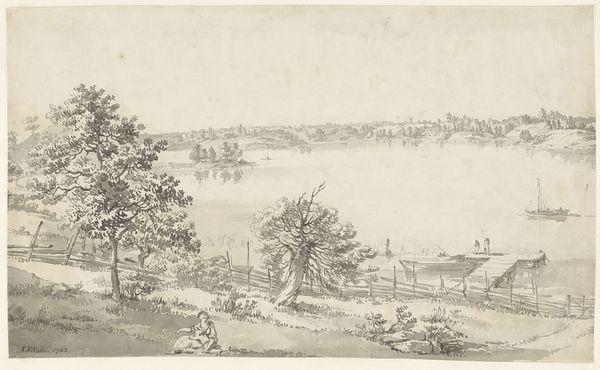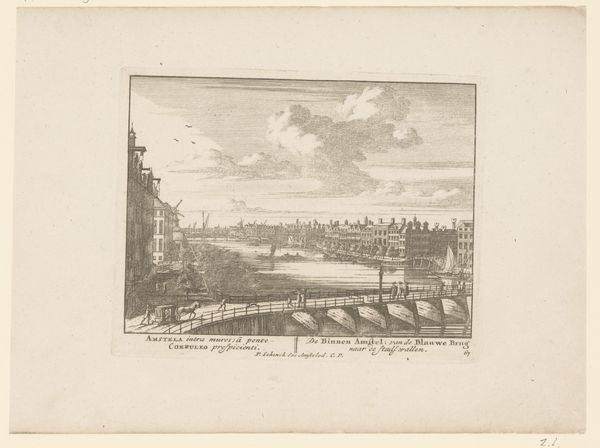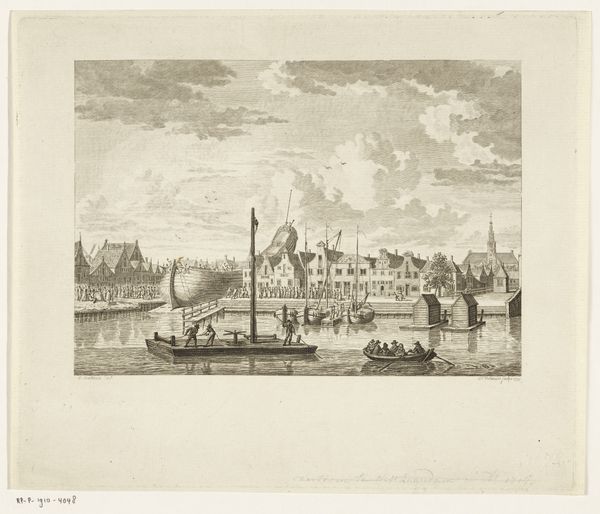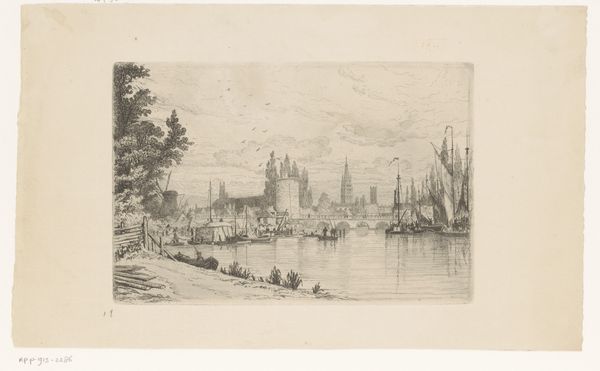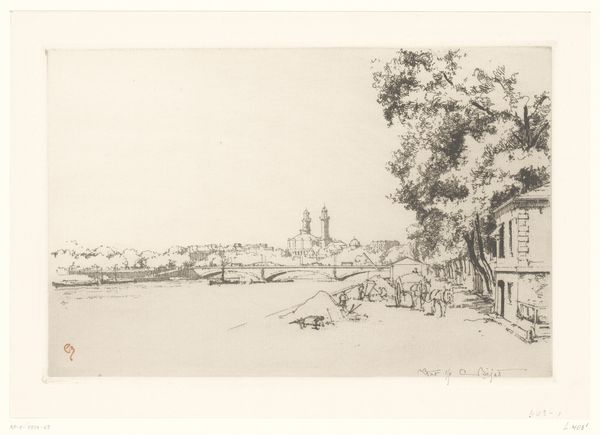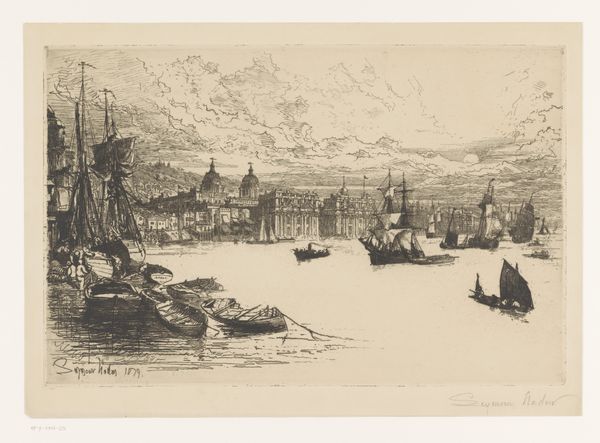
Dimensions: height 199 mm, width 165 mm
Copyright: Rijks Museum: Open Domain
Curator: Eugène Bejot's "Haven van Saints Peres en de Pont du Carrousel in Parijs," made around 1930, offers a charming snapshot of Parisian life. This etching captures a scene along the Seine, complete with boats and the iconic bridge. Editor: My first impression is of quiet industry. The cityscape almost feels secondary to the working boats along the quay. The detail of the etching is remarkable – you can practically feel the texture of the stone and water. Curator: It's fascinating how Bejot used etching to depict not just the visual elements, but also a sense of place. Consider the etcher's tools—the metal plate, the acid—and the skill involved in translating a scene into a network of lines. What kind of labor went into its production and eventual consumption by the market of prints and the public's access to these scenes? Editor: Absolutely. And looking at the workers on the quay, you also wonder about the social and economic hierarchies represented here. The bridge in the backdrop connects different parts of Paris, different lives – some enjoying leisurely walks while others work along the river. What does it say about representation that this snapshot prioritizes labor? Curator: I find myself also drawn to the technical aspects. The tonal range achieved solely through line work, it’s evidence of immense skill. But these prints also democratized art somewhat—making images of Paris available to a wider audience than oil paintings might. We have to acknowledge it's accessibility through materiality. Editor: True, the medium allowed wider access. However, it is still a question who has access to 'own' these narratives. Bejot chose this particular viewpoint, these specific details. How might his personal perspective as a privileged artist shape the story told? It also opens an avenue to see what and who is omitted. Curator: It prompts thoughts on value: the inherent value of skillful craftsmanship versus the cultural value assigned to a scene considered picturesque, marketable… desirable to the collector. Editor: It’s a compelling interplay of industry, landscape, and societal strata—frozen in time by the etching needle. It encourages you to think about Paris not just as a romantic ideal, but also a working city. Curator: A fitting point. The print is as much about the materials and the process as it is about Paris. Editor: I agree; examining it through that lens encourages consideration of social conditions and viewpoints—aspects central to my own understanding.
Comments
No comments
Be the first to comment and join the conversation on the ultimate creative platform.
